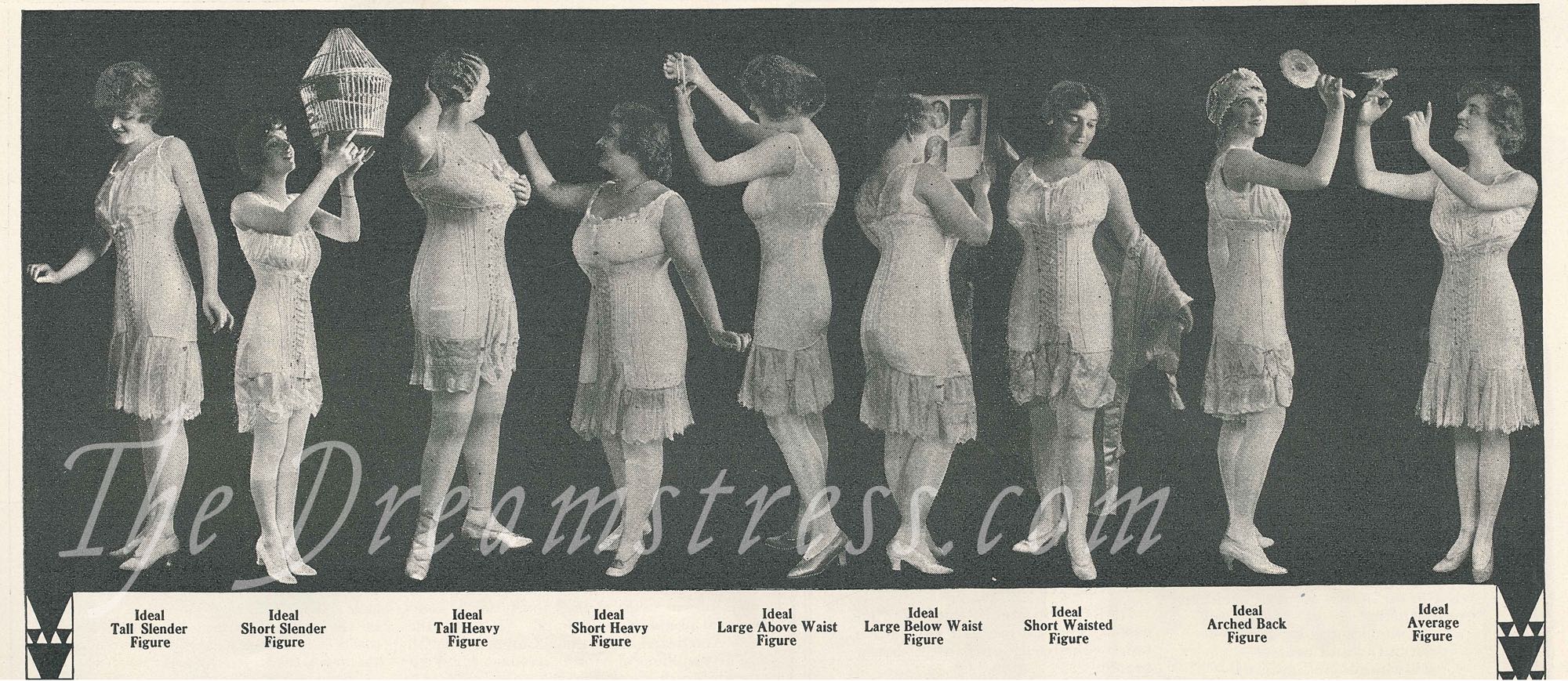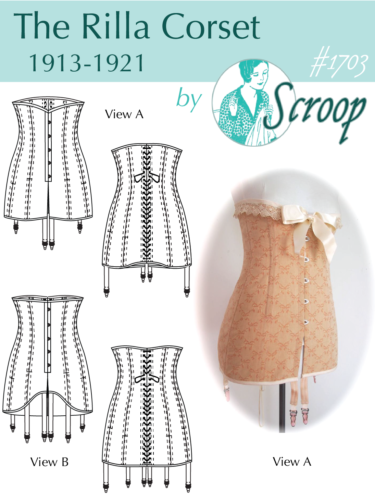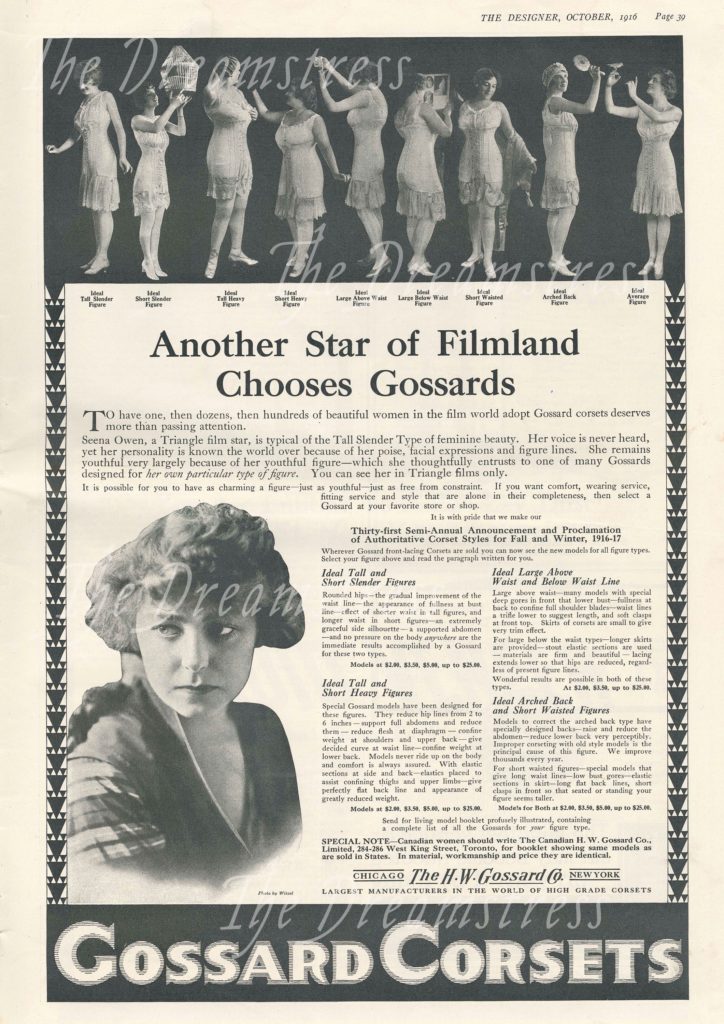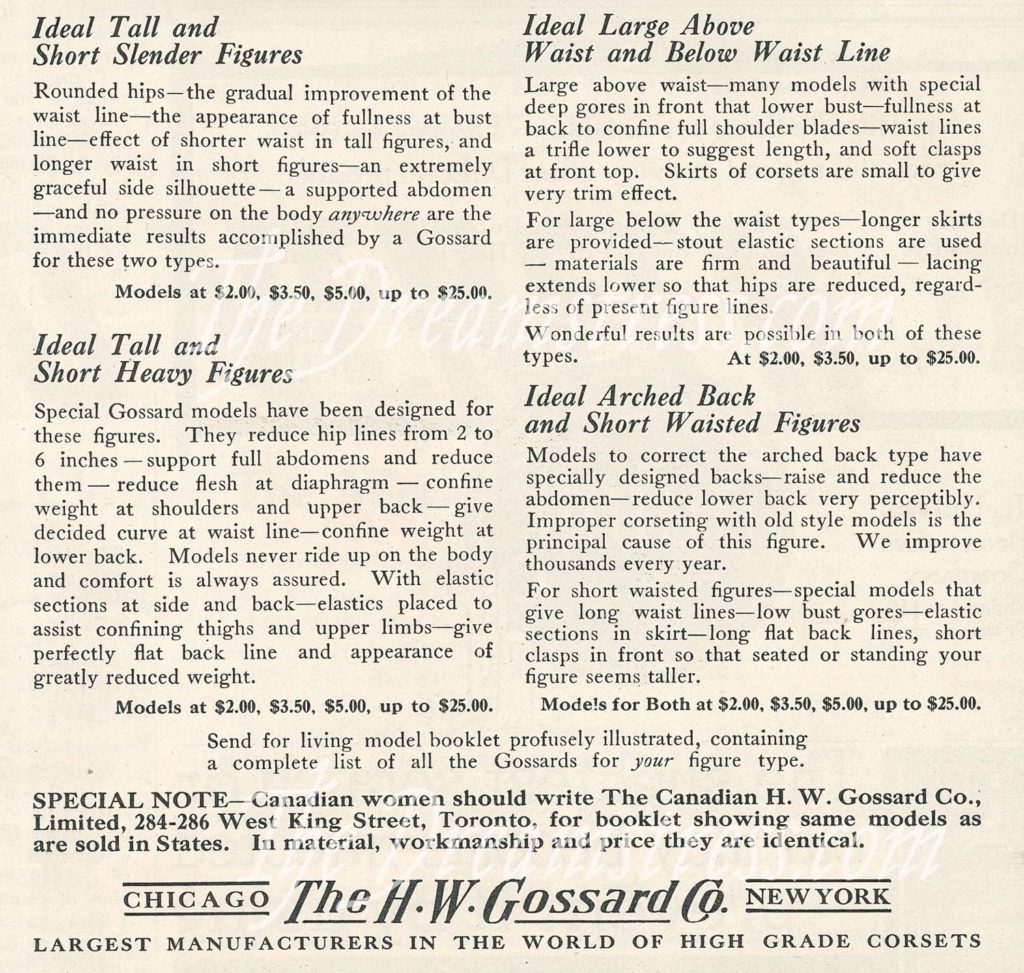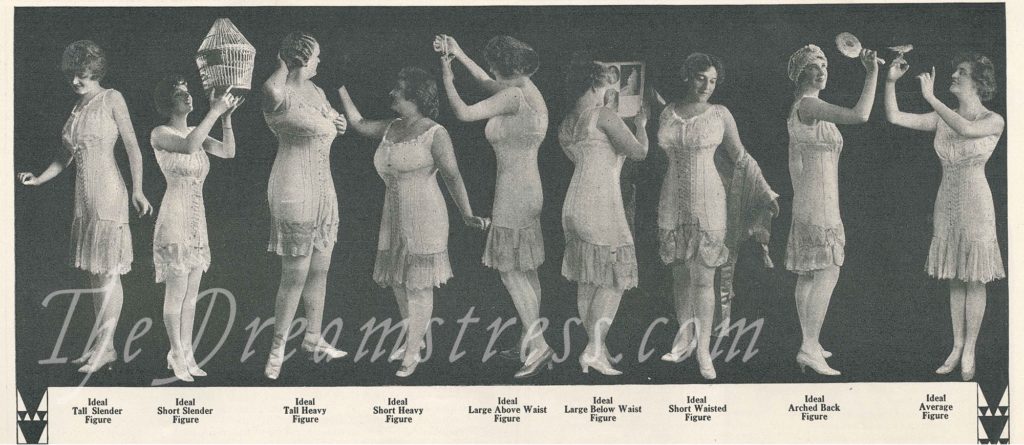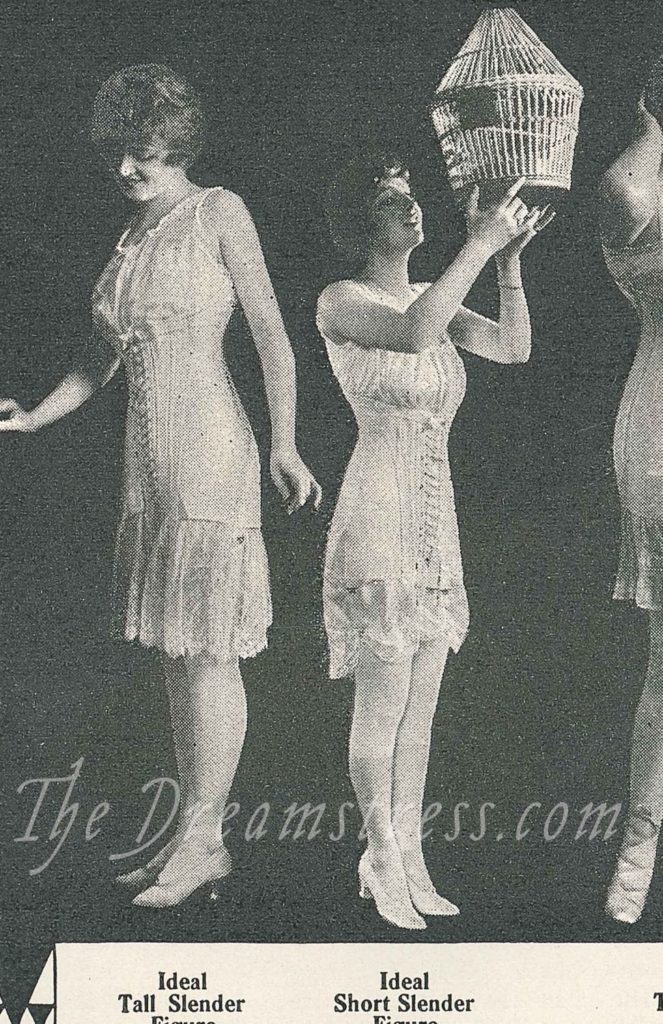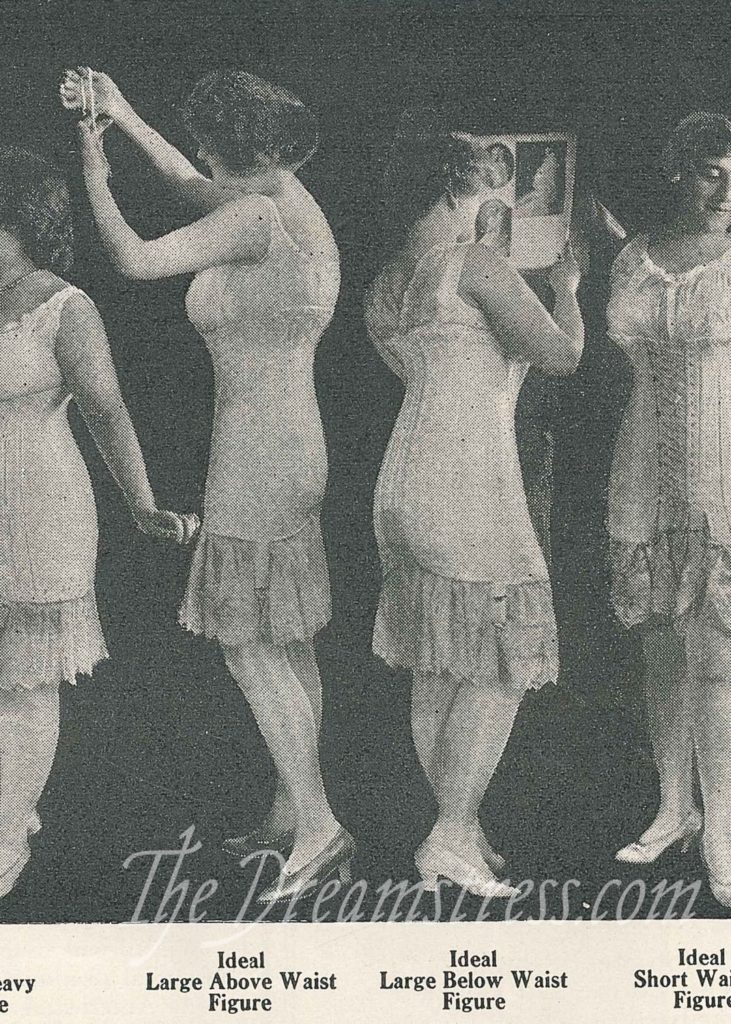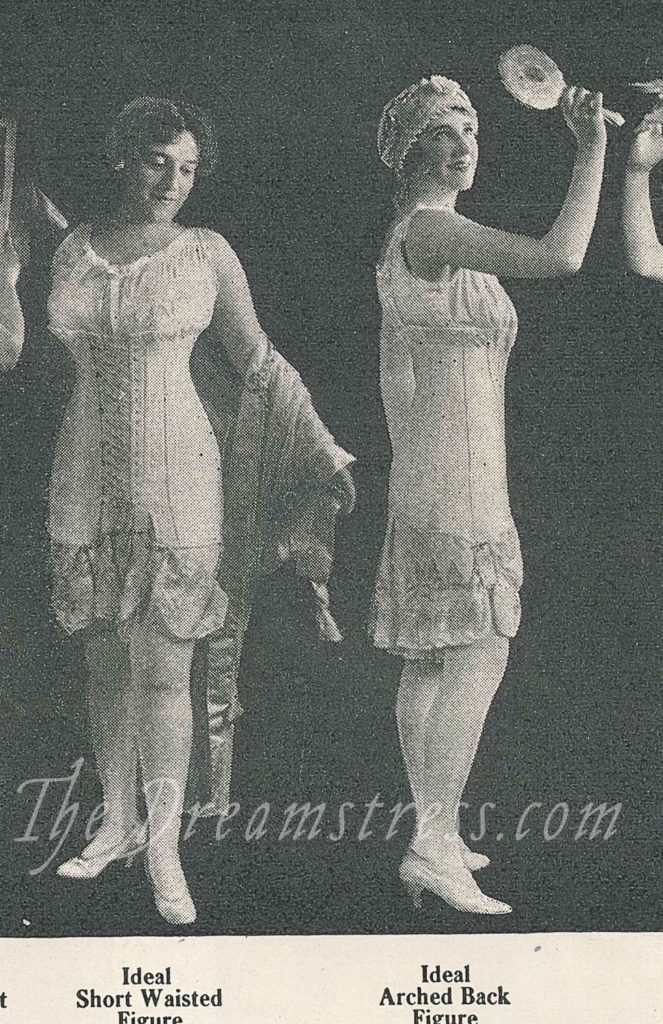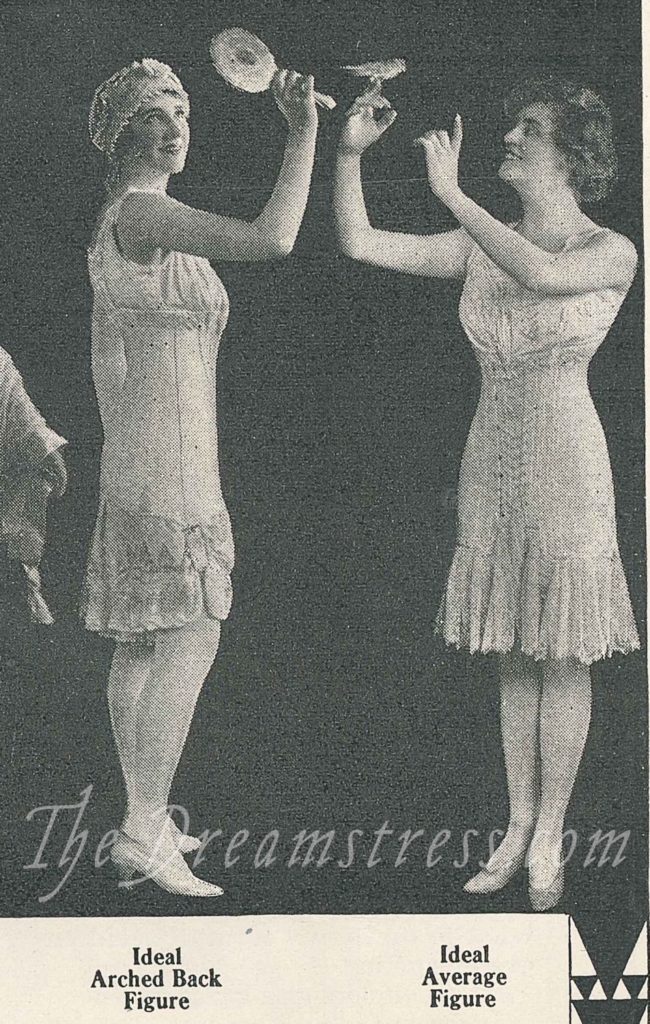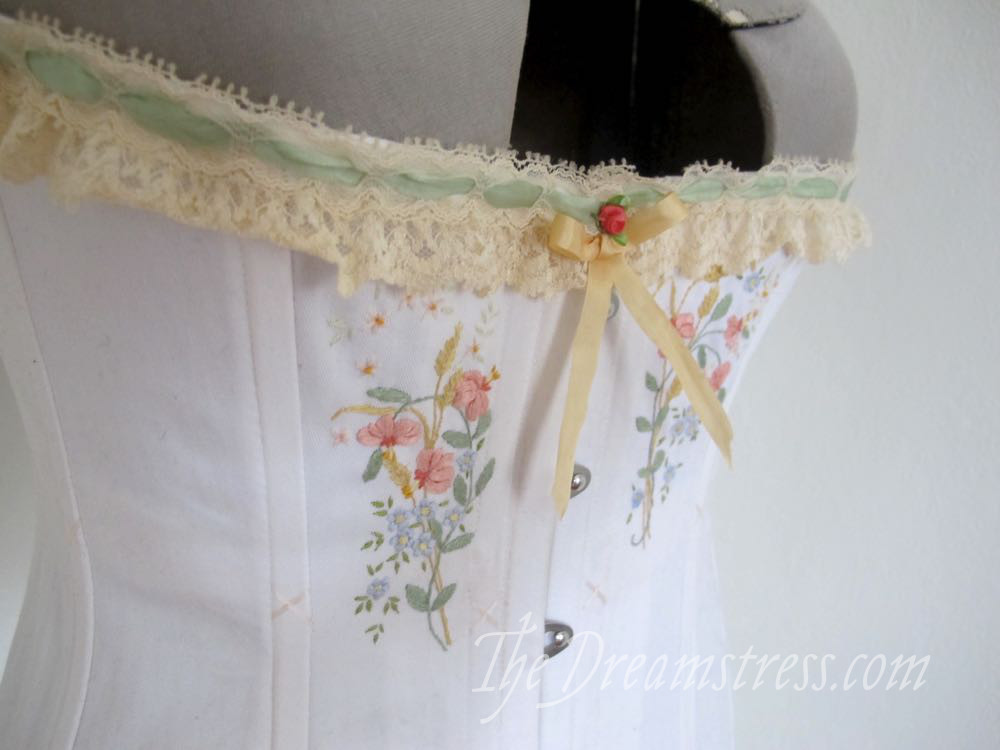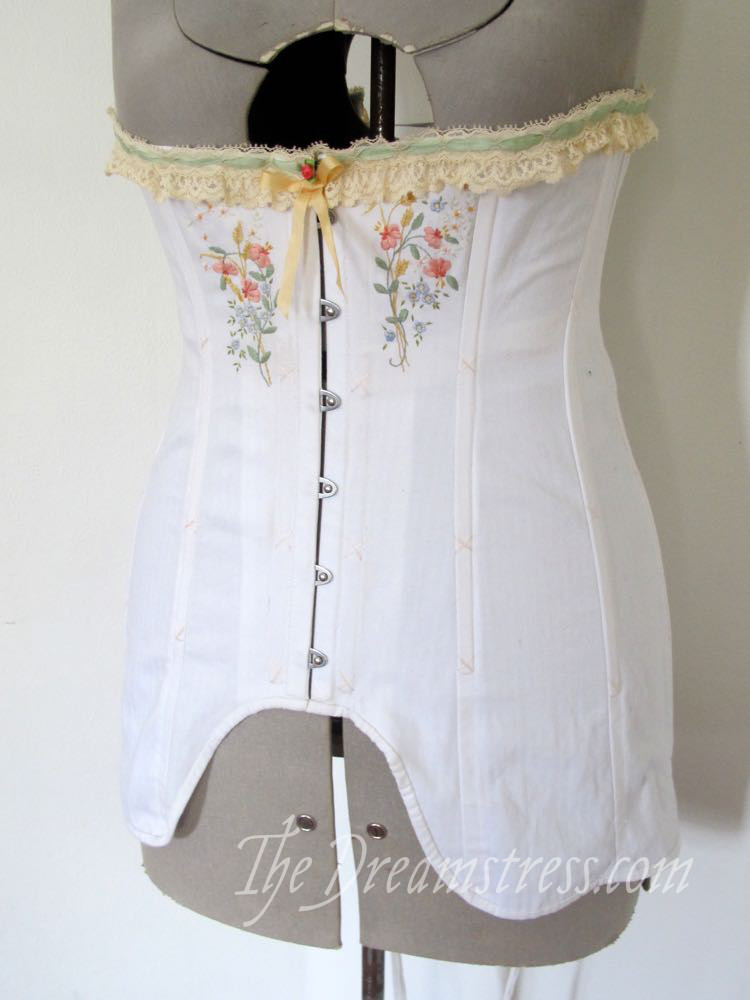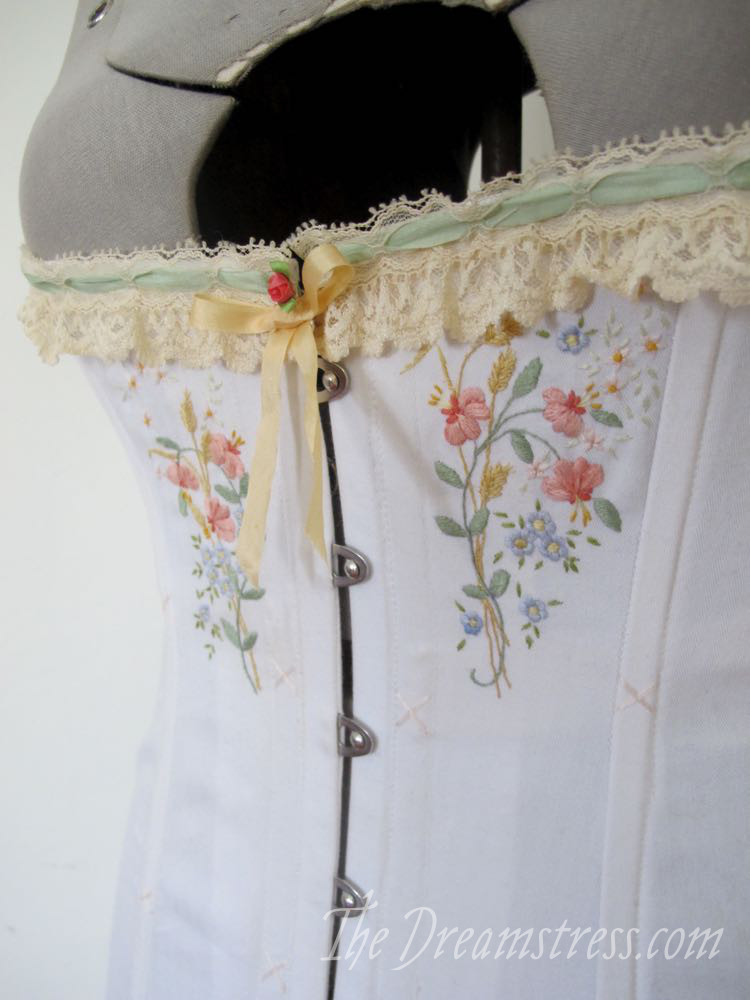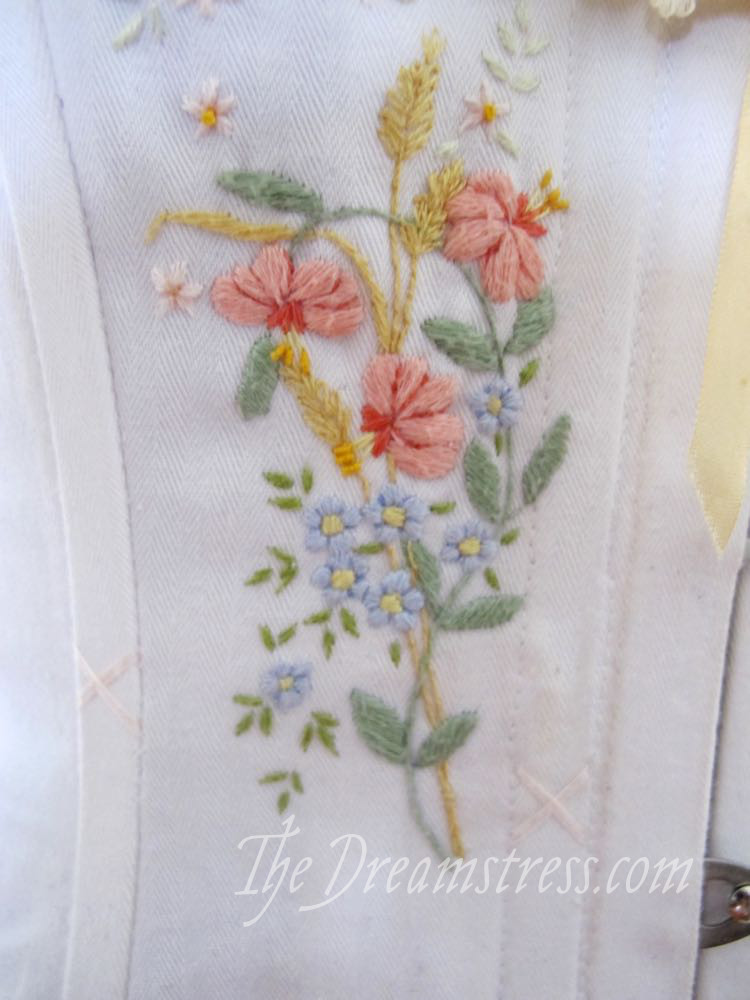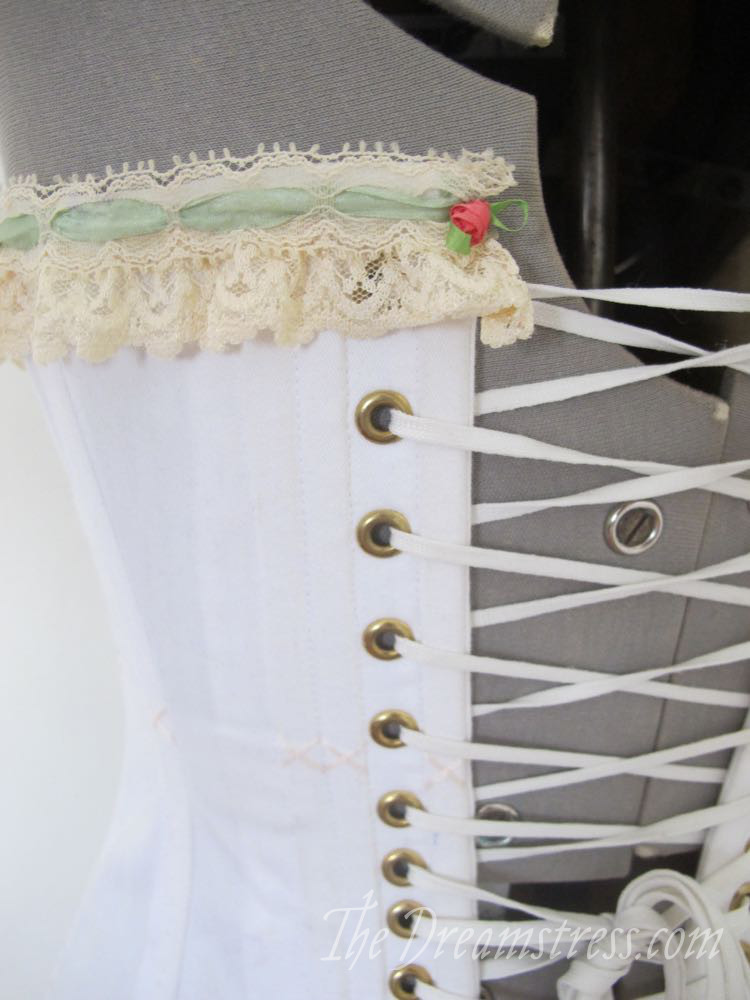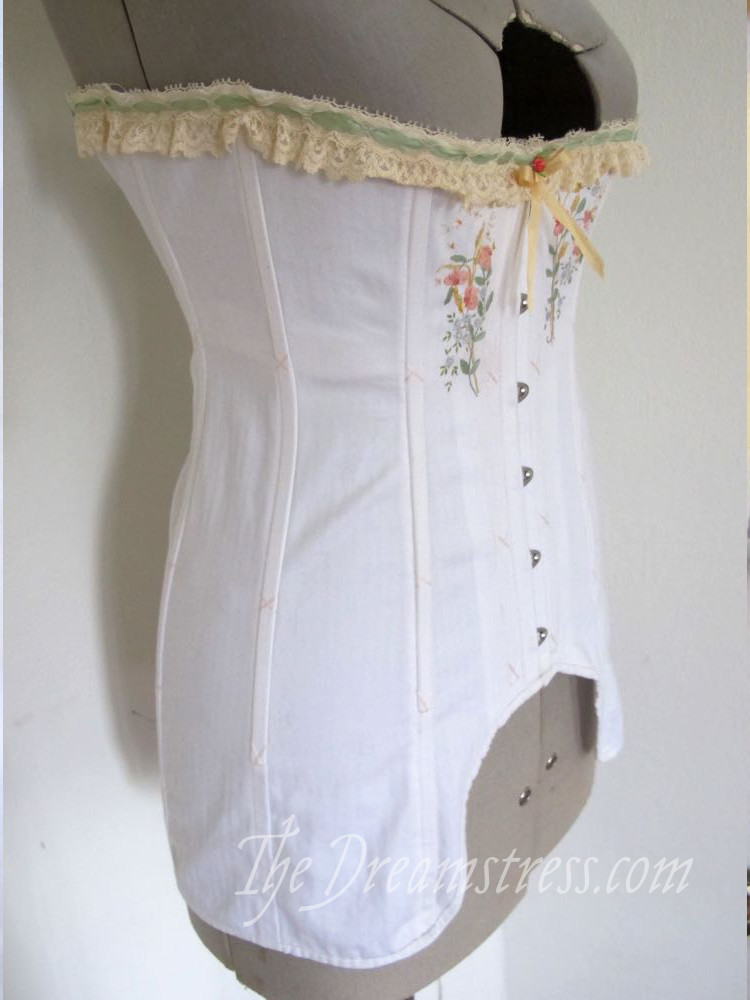As a celebration (slightly belatedly) of the release of the Scroop Rilla Corset, over the next few weeks I’ll be doing a series post about the ‘ideal’ figure from 1913 to 1921 – the period covered by the Rilla corset.
I’ll be covering how the figure ideal changed from 1914 to 1921, how corsets and other undergarments were used to achieve the ideal figure and ‘correct’ the less than ideal figure, and how to wear a 1910s corset if you are ‘large above the waist’, and how to fit the Rilla to your figure.
Of course, in any era, beauty is in the eye of the beholder: what the ideal figure is depends on who is describing it, so there are lots of variations. Part of the reason I really love the 1914-1921 period is that it covers a vast range of fashionable silhouettes within that 7 year range, even within a single year, and with so many different waistlines, necklines, skirt silhouettes and overall ‘looks’, there is a mid-teens style for every body.
To start off with, a look at the range of ideal bodies from a Gossards Corset advertisement from The Designer magazine, October 1916. Gossard’s was an American corset manufacturer that heavily marketed their range of corsets for specific individual figures, with each different style of corset being designed to mould your particular type of figure into the fashionable ideal.
I’ve got quite a few Gossard’s advertisements in my magazine collection, but this one is particularly interesting as being an early example of the use of Hollywood stars to market fashion and beauty.
Here we see Gossard’s description of how each corset enhances each figure and corrects its perceived faults:
Gossard ads typically include photographs of models for each type of figure and corset:
These images have almost certainly received at least some re-touching (aka, early photoshopping) to idealise the figure even more, but give a good general idea of what actual women, albeit ideal ones, looked like in corsets of the eral
Of course, the problem with these is figuring out where your figure would sit. I could plausibly see myself falling into the Average Figure, Arched Back Figure, Large Below Waist, or possibly even the Tall Slender Figure category!

